We have covered take-down and folding 22 LR rifles suitable for a bug-out bag, camping gear duffle bag, or backpack, several times, starting in the August 2012 issue to the latest in the September 2020 issue. After the 2020 article, we received a bunch of e-mails about including the Henry AR-7 and Chiappa Little Badger. There were also a few e-mails about the Marlin Papoose, a take-down 22 LR first introduced in 1986.
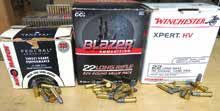
So we are back with these three additional rifles that all offer light weight and the ability to be disassembled or be collapsed and stowed in a smaller package. The 22 LR rifle can be made lightweight, and it allows you to easily carry more rounds compared to centerfire-caliber cartridges. A rimfire also can be used to hunt and in self defense, and the 22 LR round offers minimal recoil and low muzzle blast. This time, these rifles are either a take-down style (AR-7 and Papoose) or a folder (Little Badger) for smaller storage. We again looked at ease of disassembling or collapsing the rifle, ease of use, ease of loading the magazine, weight, ease in field stripping for cleaning, and finally accuracy.

First the similarities. They are all lightweight, weighing in around 3 pounds. The Marlin came with a padded, rectangular nylon bag, which was the largest storage method. The Chiappa comes with a thin unpadded triangular pouch shaped like a pizza slice. The Henry doesn’t need a bag, case, or a pouch, because all its components fit inside the rifle stock. With all the components nested inside the stock and the butt pad as a lid, the AR-7 will float. We like the way the AR-7 stows in its own stock like Tupperware. All three were fast to get into action, with the Chiappa being the fastest. However, a follow-up shot with it was obviously slow. The Marlin and Henry required lots of tightening down of barrel nuts, which made us feel like a spy in an old movie as we assembled the rifles. The Henry took the longest to get into action because the action needs to screwed into the stock and then the barrel screwed on to the action. With the Marlin, all you need to do is screw in the barrel. They were also accurate at 15 yards, with many groups resembling one ragged hole. These rifles performed without exception. The cost of the rifles ranged from about $179 up to $457.
How We Tested
Though we collected range data using iron sights, you can mount an optic or red dot on any of these rifles. When you do that, the gun becomes less of a survival rifle since neither the Henry nor the Chiappa can be stowed as originally designed. You could add a scope to the Marlin since the case is so large. We did remove the barrel after extended shooting to see how hot they were and if the threads on the locking nuts seized, but we found we could disassemble and reassemble with no issues. Sure, the barrels were warm, but they were easier to manipulate with bare hands. Also, there was no point-of-impact shift in the Marlin and the Henry between assemblies because the sights are attached to the barrels.
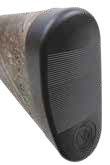
We tried three different bullet weights: 36-grain Winchester Xpert HV, 38-grain CCI Blazer, and 40-grain Federal AutoMatch Target. We tested accuracy at 15 yards, and as if we were in the field, we used our range bag as a rest and found all rifles to be quite accurate. In fact, we shot many groups that had all the holes touching. We also fired the rifles off hand at 8-inch paper plates at 25 yards. We fired for speed with the Marlin and Henry, and we fired as fast as we could with the single-shot Chiappa. Long story short, the paper plates did not pose a threat. The aperture sights on the Chiappa and Henry were fast on target, and the U-notch steel rear and ramp front sights on the Marlin were a hair slower. We had one failure to feed with the Marlin at the onset, but both semi-autos chewed through ammo. We also mixed up cartridges in the magazines to see if we could trip them up. Both the Henry and Marlin performed flawlessly.
Because these rifles are designed to be disassembled for compact storage, there are some idiosyncrasies. We think any one of these would be a good bug out/survival rifle, but the Henry would be Our Pick. Here’s why.
Gun Tests Grade: A (OUR PICK)
$349
The AR-7 is an iconic survival rifle first produced by ArmaLite in 1959 and is based on the U.S. Air Force’s AR-5, a pilot and aircrew survival weapon. Since then, the design rights for the AR-7 has changed hands many times, from ArmaLite to Charter Arms to Survival Arms and now, since 1997, with Henry Repeating Arms. Henry renamed the rifle the U.S. Survival AR-7 and made improvements to the model. Our sample is finished with True Timber-Kanati Camo. You can also get it in plain-Jane black and True Timber-Viper Western Camo.
| Action Type | Semi-auto, hammer fired |
| Overall Length | 35.0 in. |
| Overall Length Disassembled | 16.6 in. |
| Barrel Length/Twist Rate | 16.1 in.; 1:16 RH twist |
| Overall Height | 8.5 in. |
| Weight Unloaded | 3.5 lbs. |
| Weight Loaded | 4.4 lbs. |
| Sight Radius | 20.5 in. |
| Barrel | Blued steel |
| Receiver | Matte black polymer |
| Buttstock | Black, serrated plastic buttplate |
| Buttstock LOP | 14.0 in. |
| Magazine | (2) 8-round detachable box |
| Front Sight | Polymer orange post |
| Rear Sight | Adj. peep aperture |
| Trigger-Pull Weight | 4.3 lbs. |
| Safety | Manual hammer block |
| Warranty | 100% satisfaction guarantee |
| Telephone | (866) 200-2354 |
| Website | HenryUSA.com |
| Made In | USA |
The unique thing about the AR-7 is that all of the rifle components can be stored inside the stock, so the stock itself is the storage case. Fully loaded, it floats, too. We had rain water in nearby ditches during the test and dropped the disassembled rifle in. It floated, but we are not sure for how long. We did not see if the Chiappa and Marlin floated. Our guess is not.
The AR-7 comes disassembled and weighs 3.5 pounds and is 16.5 inches long disassembled and stored in the stock; it’s 35 inches long when assembled.
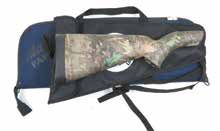
The barrel is a steel liner inside an ABS plastic tube that is coated with Teflon. This makes the barrel very lightweight. The camo finish was well executed, but we could see the finish start to wear as we assembled and disassembled the rifle. The bolt, trigger safety lever, and magazine release were blued and the rest of the receiver wore a camo finish. A black-metal barrel nut secures the barrel to the receiver. It was easy enough to tighten, but in our experience, be cautious when screwing it down so you can loosen it. A post in the barrel aligns with a slot in the receiver so they mate the same way every time. We fired the rifle with barrel nut hand tight and loose and found the rifle performed. It wasn’t finicky.
The front-sight ramp uses a fluorescent-orange-post insert that is dovetailed in place. To adjust windage, you need to tap the sight with a punch and hammer. The rear sight is part of the receiver assembly and is a simple aperture that can be adjusted for elevation by loosening a screw and sliding it up or down. At 15 yards, the rifle was dead on, so we didn’t adjust the sights.
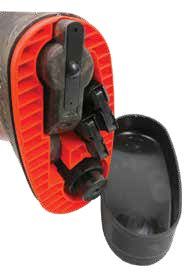
The top of the receiver had a Picatinny-style rail where you could mount an optic. You would defeat the storage function of the rifle’s stock by adding a scope, in our opinion. Toward the rear was the manual safety of stamped steel that could easily be operated via a right-handed shooter’s thumb. Back is Safe and forward is Fire. There was no texture, but the safety protruded far enough so that it was easy to operate with bare hands or when wearing gloves. The magazine well is built into the front of the trigger guard, and a toothy lever inside the trigger is pressed forward to release the magazine, which drops free when the magazine catch is pressed. The trigger guard offered plenty of room, even when wearing gloves.
The receiver assembly attaches to the front of the butt stock with a captive screw located in a recess in the pistol grip. The front of the stock is slotted on the right side to accept the receiver. The receiver assembly fit snugly into the slot and was easy to lock down with the captive screw. When attached to the stock the receiver is offset from the centerline of the stock.
The receiver assembly is a simple blow-back mechanism with dual action springs. The charging handle is designed to slide back into the bolt so it doesn’t get hung up on anything, such as your gear or environmental things. We just rolled the rifle to the right and let gravity drop the charging handle out to chamber and cock the rifle.
The barrel, receiver assembly, and two magazines fit inside the stock. You can also insert a magazine in the receiver and store it in the stock. That means you can store 24 rounds of ammo. The interior is hard plastic and fluorescent orange in color so the components stand out. They also rattle a bit inside the stock, so you may want to add a cleaning patch or two between the magazines and the hard-plastic pockets if you want to transport the AR-7 in stealth mode. The serrated buttpad is like a Tupperware lid. It seals the components from the elements and allows the stock to float. It takes some prying off to remove the buttpad. The pistol grip of the stock is serrated and offers a good grip. It also fills your hand and makes this lithe rifle feel like a full-size model.
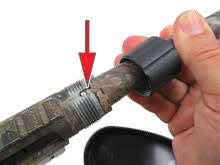
At the range, we noticed how wide the stock was. This is to allow all the components to fit inside the stock. The fat stock and that the receiver is attached to the right side of the stock required some shooters to cant their head to aim the rifle. It was a bit of a Goldilocks situation: The Chiappa stock was too small, the Henry stock too big, but the Marlin stock was just right. Again, the wide Henry stock serves a purpose and the recoil from 22 LR ammo is minimal, so canting our head was not a big deal. For small-stature shooters, this stock might be too big for comfortable shooting.
The smallest five-shot group at 15 yards measured 0.68 inches using Federal Auto Match with a 40-grain LRN. The Winchester Xpert HV with a 36-grain HP had the next-smallest group, measuring 0.46 inches. The Blazer 38-grain LRN gave a smallest group size of 0.69 inches. Many groups were one ragged hole. Accuracy was surprisingly good, and the rifle performed flawlessly. The 4.3-pound trigger had no take-up but broke consistently. Running the AR-7 in speed shooting drills was fun. We mixed up cartridge types and tried to choke it, but it chewed through all ammo with no issues. Like with the Papoose, we gripped the front edge of the receiver and pulled it into our shoulder with our support hand. It was easy to keep all shots on the 8-inch paper plate while shooting as fast as we could.
Our Team Said: The AR-7 is iconic, and this is the rifle we’d choose to stow in our bug-out bag. We like the fact the rifle stores in the stock, is lightweight, has a serviceable trigger, and ran on the inexpensive ammo we fed it.
22 Long Rifle Range Data
| Winchester Xpert HV 36-grain HP | Henry AR-7 | Chiappa Little Badger | Marlin 70P Papoose |
| Average Velocity | 1186 fps | 1266 fps | 1255 fps |
| Muzzle Energy | 112 ft.-lbs. | 128 ft.-lbs. | 126 ft.-lbs. |
| Smallest Group | 0.46 in. | 0.49 in. | 0.32 in. |
| Average Group | 0.53 in. | 0.61 in. | 0.47 in. |
| Federal Auto Match 40-grain LRN | Henry AR-7 | Chiappa Little Badger | Marlin 70P Papoose |
| Average Velocity | 1113 fps | 1222 fps | 1149 fps |
| Muzzle Energy | 110 ft.-lbs. | 133 ft.-lbs. | 115 ft.-lbs. |
| Smallest Group | 0.32 in. | 0.47 in. | 0.52 in. |
| Average Group | 0.34 in. | 0.55 in. | 0.56 in. |
| CCI Blazer 38-grain LRN | Henry AR-7 | Chiappa Little Badger | Marlin 70P Papoose |
| Average Velocity | 1207 fps | 1213 fps | 1249 fps |
| Muzzle Energy | 123 ft.-lbs. | 124 ft.-lbs. | 132 ft.-lbs. |
| Smallest Group | 0.69 in. | 0.51 in. | 0.58 in. |
| Average Group | 0.75 in. | 0.57 in. | 0.72 in. |


























The original design had an aluminum receiver and an aluminum steel line barrel with a weight of 2lbs 11oz and was touted as the 2-1/2 lb rifle. When Henry took over the design, they also used an aluminum receiver with a steel lined polymer barrel. They also set to resolve the feed jamming problem. This has resulted of them using what seems to be a zinc alloy material for the receiver and it did solve the jamming problem. What wasn’t said is that the weight increased to 3lbs 8oz and for the next two years, the marketing was still touting it as the 2-1/2lb rifle. The original AR-7 could not store the magazine in the receiver when disassembled. The last iteration from Henry allows you to store one mag in the receiver and an additional two in the stock. Quite an improvement in addition to the scope rail.